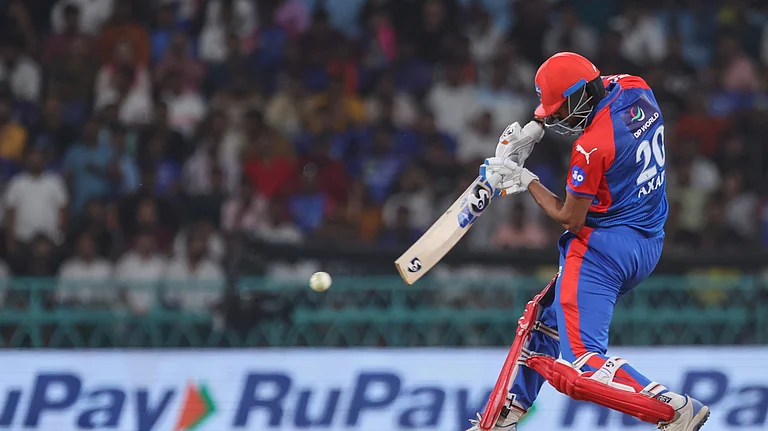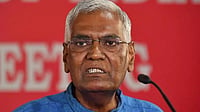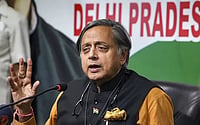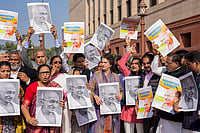An argumentative Indian can sometimes be a surprisingly passionate man. Here,the words 'surprisingly' and 'passionate' are used with some deliberationbecause the Indian in question, caught mid-argument, is none other than AmartyaSen. After all, 'passion' is not necessarily the first thing that springs tomind when you think of the good professor. You think of a measured, reasonable,persuasive voice, that marshals evidence, lays out a case, and constructs anedifice of ideas entirely through logical steps, causal connections, elegantequations and a mass of statistical and empirical data. That is what people whowin Nobel prizes for economics are usually expected to do.
And yet, in reading Identity and Violence : The Illusion of Destinywhat you do ultimately come to grips with is what might be best described inquasi-Biblical terms as 'The Passion of Amartya Sen'. In a set of nine closelyinterwoven essays, Sen takes on the violence and the threats to peace andintellectual liberty that spring from unexamined assumptions about culture andidentity in the contemporary world. In doing all this, what Sen renderstransparent is the degree to which he feels angry, sad, joyous, irritated,pleased and hopeful, sometimes all at once. We hear him chuckle and laugh,complain and get exasperated, and occasionally, we hear him sigh. Sen revisitsseveral of the debates of his earlier collection of essays The ArgumentativeIndian. He returns to them elliptically, sometimes repetitively, but alwayswith a passionate, almost obdurate intensity. As if the tasks he had set himselfare unraveling before his eyes, and are in need of constant, repetitive acts ofnurture and care.
Can the measured path of reason (which Sen invokes in the words of theEmperor Akbar, as 'rah-e-aql') be touched and ruddied by the warmth ofsentiment? A close reading of Amartya Sen's unfolding career as a moralphilosopher, and as a peripatetic public intellectual, would in fact suggestthat it can.
Amartya Sen, the moral philosopher, is a companionable interlocutor toAmartya Sen, the economist, and Sen the skeptical enlightenment intellectual isan interesting counterpoint to Sen the sentimental Bengali. Here, I mean'sentiment' not pejoratively or condescendingly, but appreciatively, as arecognition of a certain depth and intensity of feeling. This reasoned depth andintensity of feeling is the basis of the principal intervention that he makes inIdentity and Violence. We can read this in the way he glosses key ethicaland cognitive problems facing the contemporary world through an optic that owesa considerable debt to the role of 'sentiment' in classical Economic thought,particularly to a close (and somewhat covert) reading of Adam Smith. Smith,sometimes reviled as the theorist of self interest, had emphasized thesignificance of 'sympathy' in making us feel the passions of others in aneglected text called A Theory of Moral Sentiments. It is not oftenremembered that 'sympathy' for Adam Smith was as important a factor in themaking of decisions in the real world as the calculus of self interest.
Amartya Sen's arguments in Identity and Violence can be read as anexercise in the contemplation of sympathy as a social force. For him, it issympathy that produces the feelings of identity with those we consider to belike ourselves, and sympathy again that generates resonances with the feeling ofpeople we might designate as 'others' for a given purpose. Sen goes on to arguethat our affiliations are in fact plural, and that we can be more than one kindof person, given a plurality of contexts. Thus a person may be at the same time-"an Asian, an Indian citizen, a Bengali with Bangladeshi ancestry, anAmerican or British resident, an Economist, a dabbler in Philosophy, an author,a Sanskritist, a strong believer in secularism and democracy, a man, a feminist,a heterosexual, a believer in the rights of gay and lesbian people, with a nonreligious lifestyle, from a Hindu background, a non-Brahmin and a non believerin the afterlife"
The person whose portrait this is (and can it be anyone other than ourargumentative Indian?) is not a being without identity, or a man withoutqualities, but a person who engages different aspects of his self whenencountering different kinds of people, situations and choices. His 'sympathies'are neither monochromatic nor monotonous, in fact they articulate a broadspectrum of possibilities that need not add up to a consistent or evenharmonious monad. As Sen says, with some poetry and much conviction, thehorizons of the self are multiplied, not halved by history and circumstance.
Following Sen, we could argue that it is precisely this matrix of complex'sympathetic' resonances between different aspects of different selves thatmakes for the web that we are accustomed to think of as society. To think of anyone of them as cardinal is to enter the trap of the illusion that we aredestined to be one thing over all others. The refusal to entertain the 'illusionof destiny' entails a recognition that we choose to be who we are more than thatwe are condemned to be who we are said to be. It means understanding of the factthat some Bengalis may enter into relationships of significance with some Uzbeksbased on an acknowledgment of their common agnosticism, even as some Bengalismight enter into meaningful dialogues with some Tamilians on the basis of ashared perception of non-Brahmin identities, just as some devout Jainvegetarians who are heterosexual but believe in the rights of gay and lesbianpeople might find common cause with some homosexual Muslim, or Sikh, or Hindu,or Jewish, or Christian or Atheist carnivores. These relationships and alliancesare contingent on the situational dynamics that different people find themselvesin at different points of time, in different places and contexts, and atdifferent times in their lives. They spring from local circumstances and theyspan the earth. They are the products of reasoned choices made by reflectiveindividuals and discursive communities. Some of these may be more enduring thanothers, and might determine a greater part of a person's life, others may bemomentary but highly significant in terms of the intensity of interaction. Somemay lead to lasting friendships and alliances, others may lead to accidental andmomentary but significant solidarities. But in either case, the placing ofpeople in boxes that designate one identity to the exclusion of othersleads necessarily to impoverished, 'miniaturized' selves and stuntedsocial possibilities. This impoverished self is what Sen designates as beingunder the sign of a 'solitarist' conception of identity.
This 'solitatist' notion of identity creates guided missiles of the self thatkeep hitting the same target. Thus, the contemporary Muslim or Hindu orChristian is shorn (by others and in many cases by himself) of any possibilitiesother than those underwritten by what Sen calls 'Civilisational Incarceration'.She is condemned to become a shade of what she could be simply on the basis of areceived idea of what it means to be Muslim, or Hindu, or Christian, orwhatever. Sen demonstrates this process of the 'impoverishment' of a series ofidentities, be they configured as 'Muslim' or 'colonized' or 'Western' subjects,with an array of arresting examples and contrapuntal histories that span fromIndia, to China, to Ireland, to Africa, to the Arab and Islamic world. Hepatiently argues a case for a considered appreciation of the Islamic world'scontribution to science, technology, doubt, the freedom of thought and reason asa necessary countermeasure to the univocal registers of the theses of the'Clash' and 'Dialogue' of Civilisations. He shows how uncritical'multiculturalism' may very easily devolve into a set of plural 'monocultures'.He argues for an acknowledgment of the debts that the West owes the East, andvice versa. He searches for room in the difficult but vitally necessaryintellectual space that is neither an elegy nor a dirge for the long history ofglobalisation. He is able to see the validity of the critique of immiserisationthat many 'anti-globalisation' activists articulate, and he is also able tostate (though not as convincingly) that the operation of global market forcescan have a variety of different consequences when they are qualified andattenuated by wider social choices and decisions about democracy, genderrelations, health, and education.
While reading Identity and Violence, I also read a remarkabletestament to the violence of identification - a set of twin blogs in Hindiand English thatdocumented and witnessed the destruction of one of Delhi's most alive andhospitable neighbourhoods - Nangla Machi - on the banks of the Yamuna, flankingthe ring road as it arcs past Pragati Maidan. Thousands of hard working, peaceablepeople were made homeless last week by bulldozers and riot police acting underthe orders of the judicial apparatus, to the accompaniment of a deafening nearsilence in the media. Accounts of wardrobe malfunctions at fashion shows tookprecedence over news of demolitions and the relentless violence of anun-accountable judiciary. The blog entries, written by young media practitionerswho lived in Nangla Machi and some of their interlocutors, speak of a world ofeveryday sympathies and solidarities, of the complex map of identities that isembodied and lived in a working class neighbourhood in a city like Delhi.
Ironically, it was the residents' inability to furnish proof of their'identities' and documents, a grave failing in the face of the ruthlessness of astate mandated demand for 'solitarist' inscription as 'legal' inhabitants, thatled to a perceptional precedence of their status as trespassers over theirclaims to humanity and habitation in a city. This is what eventually contributedto the continuing violence of their eviction. It is those who refuse to beidentified, or those who sometimes cannot be adequately identified, who alsobear the brunt of the harshest blows when the violence of identification comescalling astride a bulldozer armed with a court order. Underlying it is a totalnegation of any 'sympathy' on the part of the judge who writes the evictionnotice towards those who are to be evicted. For him, there cannot be any pointof intersection or resonance between their humanity and his eminence. After all,he reasons, they defecate by the road, and he purges in his chamber. A cleardemarcation of identities, even of corporeality, between the judge and thejudged, between the elite and the urban subaltern, is the necessary prelude tothe role played by the foundational violence of the state in the process of there-configuration of the city.
Reading Amartya Sen on violence and identity is an occasion that might helpus find ways in which to think about this fact with precision and with sympathy,and consider ways of ensuring that it happens less often.
The reviewer is co-founder of Sarai. A slightly shorter, edited version ofthis appeared in print.


























